Interesting Words
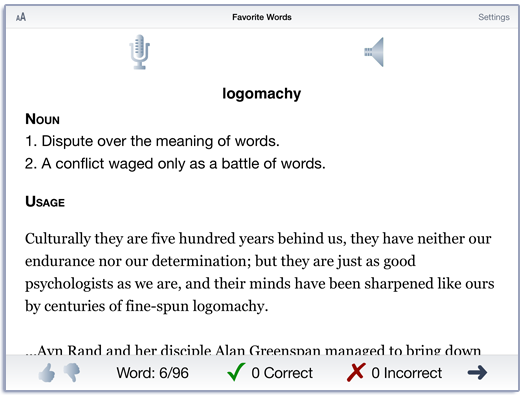
Do you ever run across a word like supercilious or kerfuffle and chuckle a bit about how they sound? Or see karst or leitmotif and say to yourself, “I didn’t know there was a word for that.” Over the past few years, I’ve been collecting interesting words that I run across in articles, blogs, and occasionally books and magazines. There are over 1,200 of them in this app, along with examples of their use. Most of them are not used frequently in discourse but are used frequently enough that most readers will come across them from time to time.
You can view the entire wordlist on this website at Favorite Words.
Get Favorite Words at the App Store for $0.99
208 sight words for beginning readers of any age.
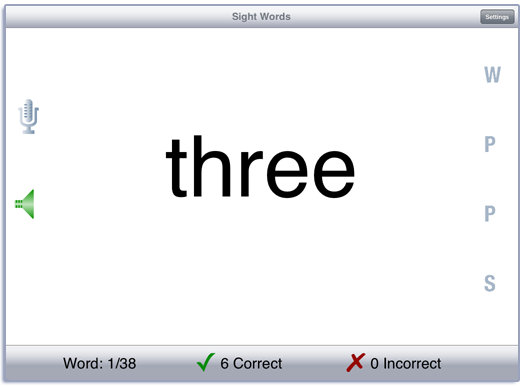
Studies have shown that good readers look at some words and automatically decode them. The Sight Words app lets beginning readers get a head start on learning these words. It also helps older students who are struggling with reading master the sight words.
There are 208 words organized by level of difficulty–Pre-Primer, Primer, Grade 1, Grade 2, and Grade 3. The colorful photos provide a visual cue for the word, The phrases and sentences help the student visualize the word in context.
Once the student is familiar with the words, from seeing them in context, use the Settings button to switch to the practice mode. The app will display 18 words on the screen—each of the words along with foils. The objective is to find three targets in a field of fifteen foils. Both the number of targets and the number of foils can be changed in the Options.
When the student is doing well in the Practice level, tap the Settings button to look at the options for the Challenge level. The Challenge level has foils that are not necessarily familiar to the student.
Get Learning Sight Words at the App Store for $1.99
Stories to engage young readers.
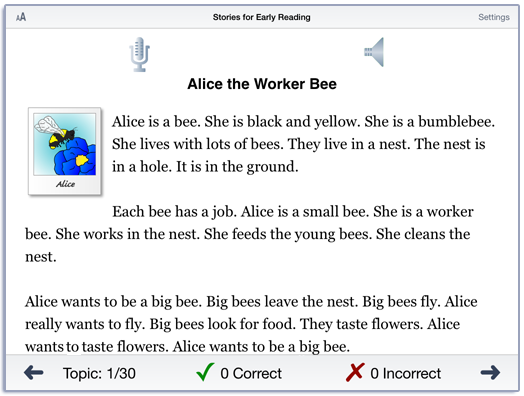
The Early Reading app has 30 short stories. Most of the words are 1 or 2 syllables. They are in simple sentences. Sentences have 5 to 8 words. The student is asked to answer three direct questions that rely on facts in the story.
Read about Alice the bee, Rita the tree rat, Jensen the duck and Bob the buffalo, Hector and Bo the dog, Lily and her grandmother’s farm, and more.
These stories are aimed at very early readers so the questions are straightforward. They do not require making inferences or judgements. In most cases, the correct answer can be found word-for-word in the story.
The fourth question usually requires the student to recall multiple items from the story. At the end of each story there is an open ended question for discussion.
Get Reading for Details: Stories for Early Reading at the App Store for $3.99
Stories for reading practice for Grades 1-3.
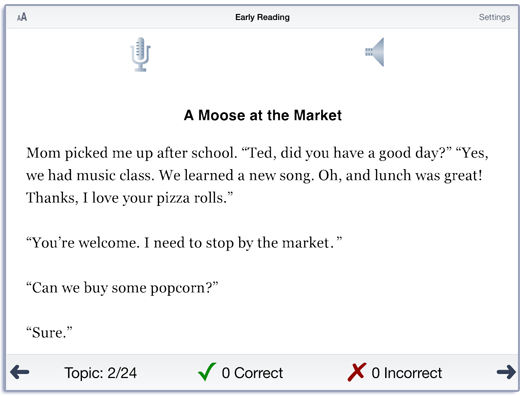
This app has 26 stories about adventures, activities, nature, and human interests. All require careful reading to comprehend and recall details in order to answer the comprehension questions that follow. The student is asked to determine the main idea of the story, answer some questions that rely on details in the story, and make an inference that is supported by the details. At the end of each story, there is an open-ended question for discussion.
Ideally, the student will work with a parent, teacher, or therapist while using the app. The mentor can guide the student’s reading strategies while using the app as a source of stories and questions.
Reading for Details I has short sentences with words that are are appropriate for third-grade readers. Paragraphs are usually short. Sentence structure is simple and information is directly stated.
Get Reading for Details I at the App Store for $3.99
Stories for reading practice for grades 4-6.
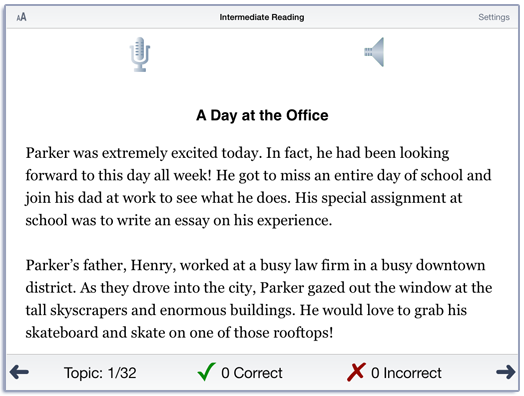
This app has 28 stories about adventures, activities, nature, and human interests. All require careful reading to comprehend and recall details in order to answer the comprehension questions that follow. The student is asked to determine the main idea of the story, answer some questions that rely on details in the story, and make an inference that is supported by the details. At the end of each story, there is an open-ended question for discussion.
Ideally, the student will work with a parent, teacher, or therapist while using the app. The mentor can guide the student’s reading strategies while using the app as a source of stories and questions.
Reading for Details II has compound and complex sentences with words that are are appropriate for sixth-grade readers. Paragraphs are usually short.
Get Reading for Details II at the App Store for $3.99
Practice reading for comprehension.

This app has 37 stories about history, nature, and human interests. The student is asked to determine the main idea of the story, answer questions that rely on facts in the story, and make an inference that is supported by the story. At the end of each section, there is an open ended question for discussion.
Get Reading Comprehension at the Paragraph Level at the App Store for $3.99
Three apps with stories for reading practice.
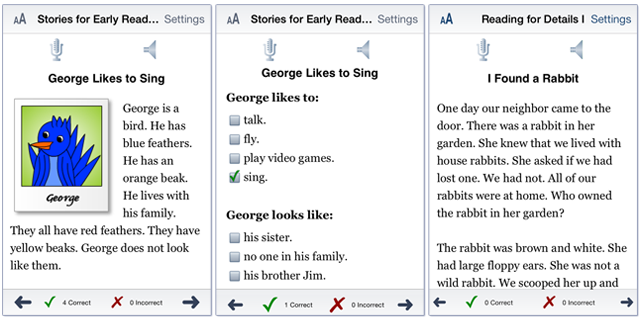
Reading for Details: Stories for Early Reading is the simplest of the series. The vocabulary and sentence structure are appropriate for early readers or children who are having difficulty with complex stories.
Reading for Details I has short sentences with words that are are appropriate for 1st—3rd grade readers. Paragraphs are usually short. Sentence structure is simple and information is directly stated. Stories generally have between 350 and 400 words.
Reading for Details II has stories written by authors from around the world and a vocabulary that should be familiar to 4th—6th grade students. Words and idiomatic phrases from other cultures are often used and defined in the stories. This adds an element of cultural diversity and allows the reader to see events from another's perspective.
Get Reading for Details Bundle at the App Store for $9.99